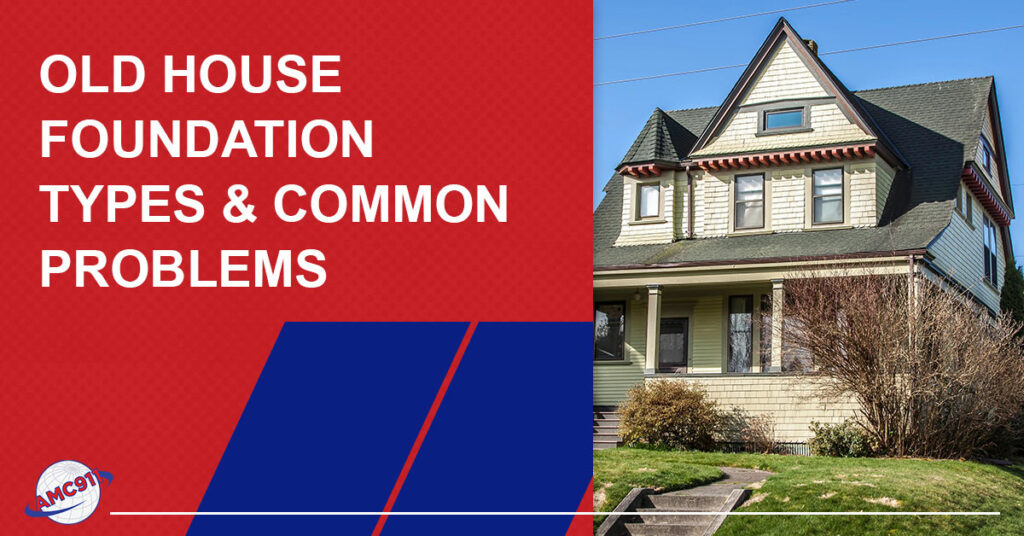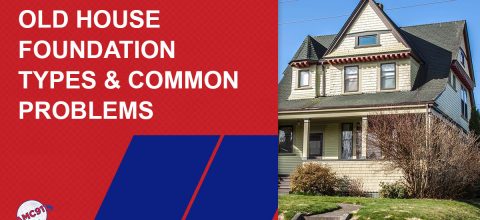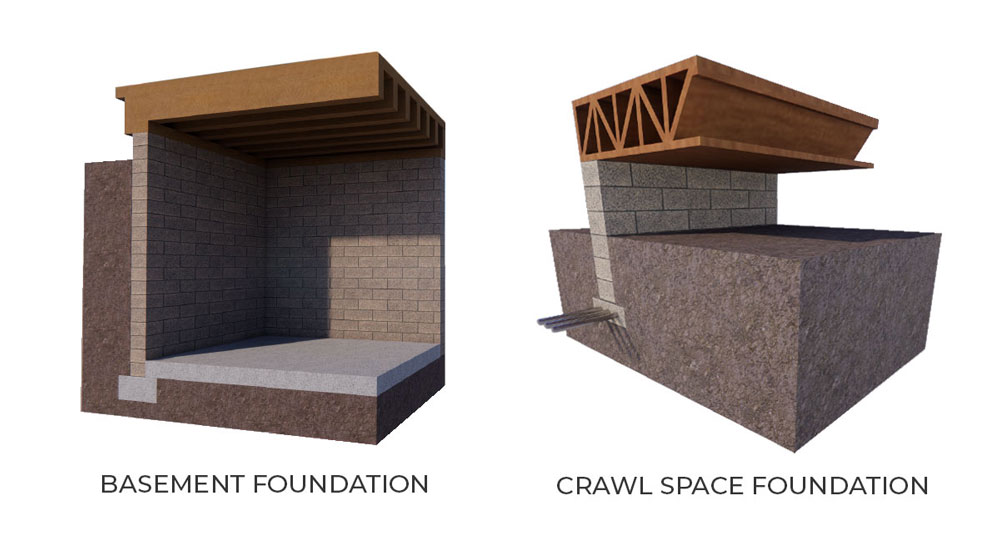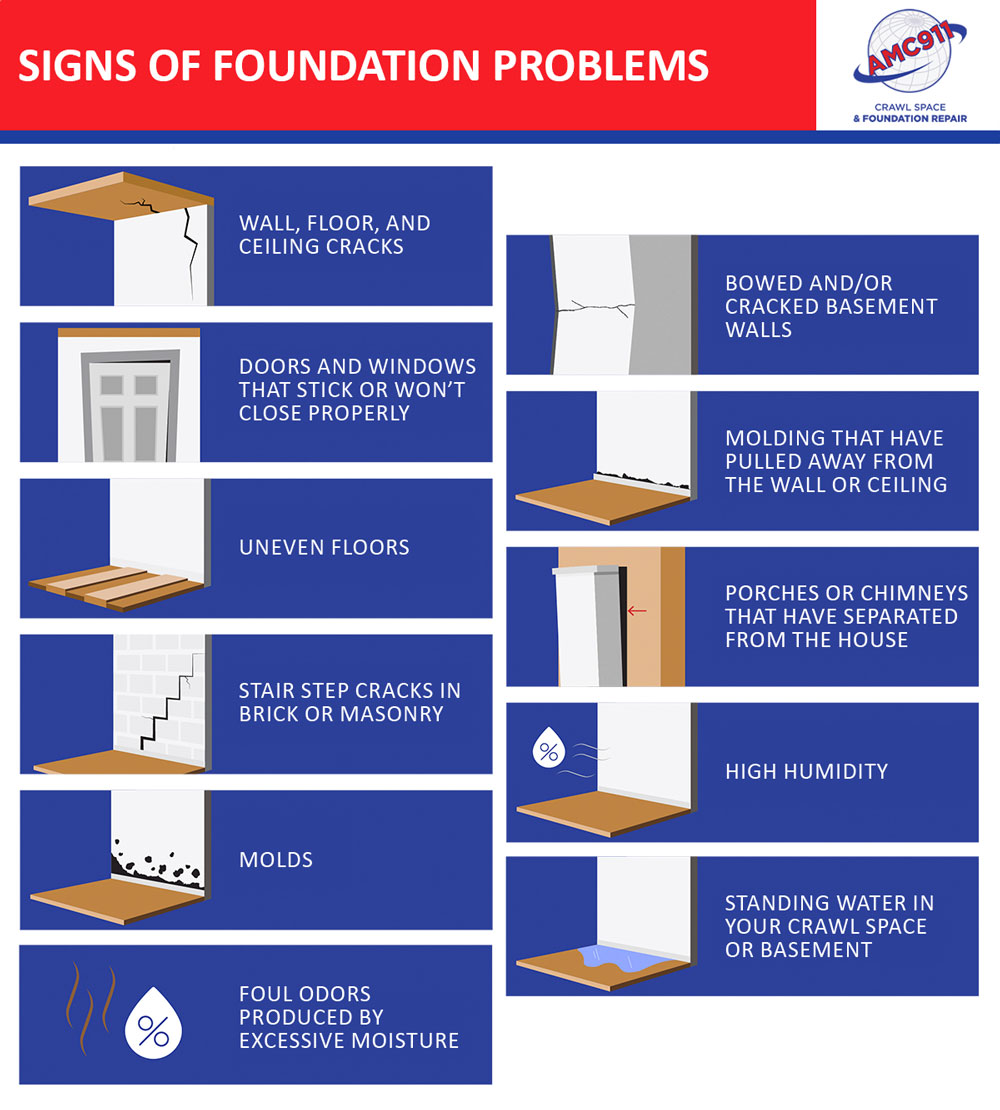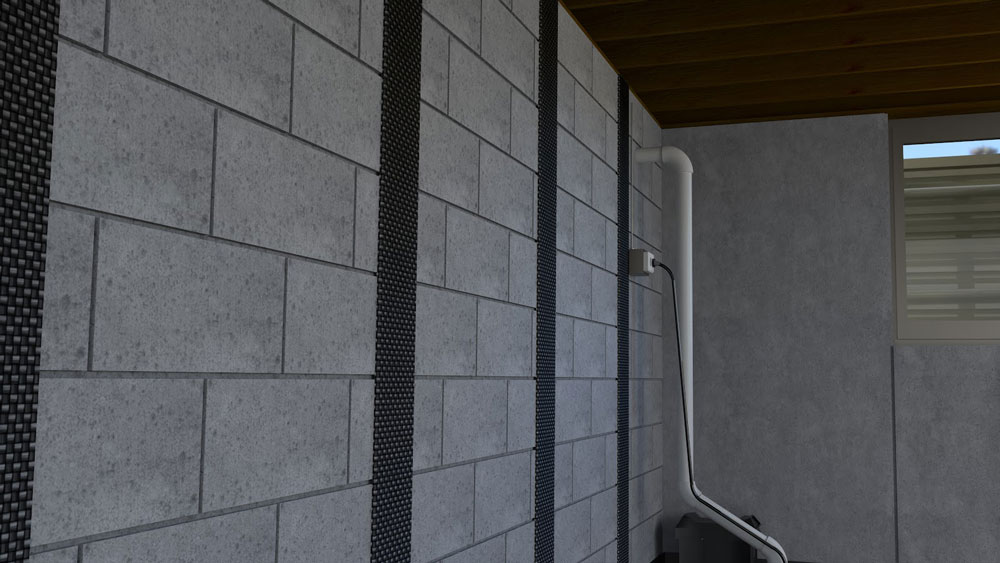If you have a home with an older foundation or you are considering purchasing one, this article will tell you what you need to know about some of the potential foundation problems you might face, what causes them, and repair options.
Most Common Old House Foundation Types
Most older homes have either a crawl space or a basement foundation. Crawl space foundations elevate the home above the ground and provide a small space below for utilities and storage in some cases. In contrast, full basements go deep enough into the ground to create an area suitable for living.
Foundation Materials in Older Houses
One of the main differences between an old foundation and a newer one is the materials that the builder used to construct the foundation. While many modern foundations use poured concrete, old house foundation types are more likely to feature the following building materials:
- Natural stone
- Brick
- Wood
Noticing these materials is the first sign that you are looking at an older foundation. Additionally, many old foundations use lower-quality building materials, including older, less effective types of cement and mortars mixed with low-quality aggregates. These suboptimal building materials can contribute to problems with the foundations in older homes.
Foundation Problems Common in Old Houses
The foundation problems below can occur in any home. However, they are more likely to arise in an older home. Here are two of the most significant foundation concerns to watch out for in an older house:
- Differential foundation settlement: A small amount of uniform settlement is typical in a home. However, differential foundation settlement involves uneven foundation shifts that can damage your entire home. Differential foundation settlement is more common in old houses for a few reasons. First, the original builder likely did not follow current construction best practices, such as ensuring full soil compaction before creating the foundation. Additionally, older homes simply have more opportunities to experience differential foundation settlement since they have been around for longer.
- Hydrostatic pressure: This term refers to the pressure that water places on surfaces it touches. When groundwater arrives outside your foundation, it saturates the soil and can place immense pressure on your foundation wall. This hydrostatic pressure causes cracking, bowing, and severe structural damage. Old foundations typically lack drainage systems that can efficiently convey groundwater away from the home, making hydrostatic pressure more common.
Sign of Foundation Damage
If you have an older home, understanding that foundation issues can arise is an excellent start. However, it’s also essential to know the signs that this damage has occurred in your home. Below are some of the most common signs that you are facing a foundation problem:
- Foundation wall cracks
- Cracks in walls, floors, and ceilings throughout your home
- Sloping floors
- High humidity
- Foul odors produced by excessive moisture
- Mold and mildew
- Standing water in your crawl space or basement
- Jammed doors and windows
- Stair step cracks in brick or masonry
If you see any of the above – or anything else that strikes you as suspicious – contact an experienced foundation repair contractor right away and ask for an inspection. Foundation issues spotted early cost less to repair.
How to Repair Differential Foundation Settlement
Repairing differential foundation settlement is not something you can do on your own. Fortunately, foundation professionals have a reliable repair option for this common problem. The most prevalent solution to differential settlement is a service called underpinning.
Underpinning involves the use of foundation piers to raise and stabilize a foundation. These piers come in two main forms: helical and push piers. Helical piers are like giant screws that twist into the earth. In contrast, push piers are driven into the ground with a hydraulic pump.
After inserting the piers in the earth, the foundation team will attach them to the foundation. The connection allows the team to raise the foundation to the maximum practical level and hold it in place to prevent future settlement.
Resolving Hydrostatic Pressure
We’ve already mentioned that hydrostatic pressure can wreak havoc on your home’s foundation. Fortunately, foundation professionals have also found a resolution to this issue.
To resolve hydrostatic pressure, the foundation team will excavate around the outside of the foundation and remove any standing water. Next, the team will either enhance the existing drainage system or install a new one that is better capable of managing water.
Before filling the excavated hole, it’s common for a foundation professional to add a waterproofing layer to the exterior of the foundation. After applying this layer and filling the excavated hole, one of the final steps is to restore the strength of the foundation wall. The foundation team often achieves this by installing carbon fiber straps or wall plate anchors.
Have a Professional Check Out Your Home’s Foundation
Whether you have an older home or a newer one, foundation issues are pervasive. Having a trusted professional on your side is the best way to remedy these issues and prevent them from occurring in the future.
If you are in Virginia Beach, Chesapeake, Norfolk, or the surrounding areas, Atlas Master Companies 911 is ready to help you with all of your foundation needs. Contact us today to learn more about what we can offer.

